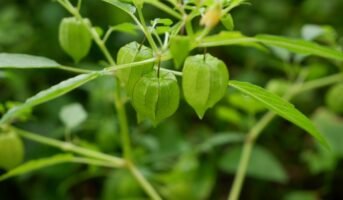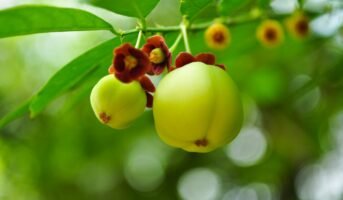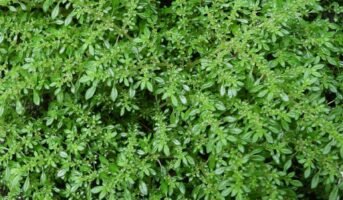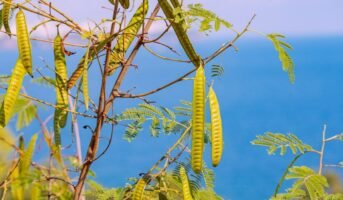We in India have a special affection for the Jamun tree. However, this affection for the mighty Jamun, botanically known as Syzygium Cumini, is not just because it is a native.
With an illustrious medical history, Jamun is lauded in both Ayurvedic and Unani medicine traditions as an effective cure for several ailments. Also known as Malabar Plum, Syzygium Cumini or Jambolan, the Jamun tree originated in India and has been well-adapted worldwide, including in the US, Australia, Hong Kong and Singapore.
Valued for its medicinal properties, beauty and timbre, the Jamun tree is one of the most commonly found shady trees in India.
However, it must not be confused with the blackberry despite the uncanny similarities between its colour and shape.
See also: Ashwagandha plant: How to grow and care for Withania somnifera
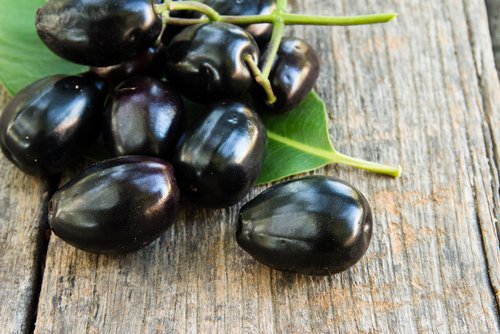
Jamun tree: Key facts
| Botanical name: Syzygium Cumini
Common names: Malabar Plum, Java Plum, Black Plum, Jamun, Jaman, Jambul, Jambolan, Jambu Phal Family: Myrtaceae Type: Evergreen Native: Indian subcontinent Life: Up to 100 years Height: Up to 100 feet Flowering: March to April Fruit bearing: May or June |

Jamun tree benefits
Each part of the Jamun tree is packed with medicinal properties.
Jamun bark benefits
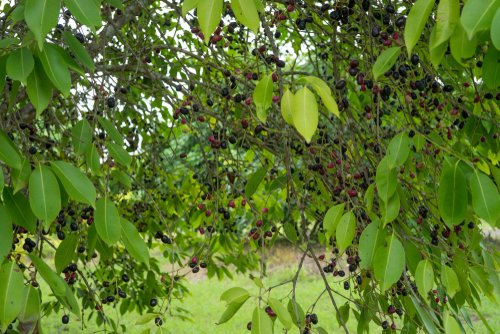
Acrid and sweet, the bark of the Jamun tree has digestive properties and acts as an astringent with the power to destroy worms. A great source of blood purification, Jamun tree bark cures sore throat, bronchitis, asthma, thirst, biliousness, dysentery and ulcer.
What is Jamun fruit?
Jamun is a summer fruit, with a dark purple hue bordering to black with pink-white flesh.
What is Jamun fruit called in English?
Jamun is known as Malabar Plum or Java Plum in English.
Jamun fruit benefits
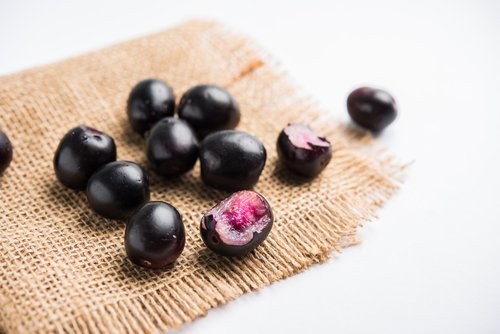
People with constipation and other digestive disorders must take the Jambu phal because of its diuretic properties.
Rich in Vitamin C, iron, calcium, phosphorus, magnesium and folic acid and low in calories, the Jamun fruit is a sweet treat for diabetics. Also, the polyphenolic ingredients in this fruit are effective in treating diabetes. The anti-oxidants and minerals control heart issues.
Those suffering from anaemia could use Jamun fruit as a cure since it is known to increase red blood cells and haemoglobin count.

Also read about the many benefits of Ajwain
By keeping your digestive system in shape and purifying your blood, Jamun makes your skin glow and blemish-free. The acrid and sweet fruit also keeps bad breath and oral issues at bay.
Vinegar prepared from the juice of the ripe fruit is useful in treating spleen enlargement and chronic diarrhoea.
Jamun seed benefits
Traditional medical healers in Madagascar use the seeds to treat diabetes due to compounds known as Jamboline and Jambosine. The seeds lower the rate of sugar released into your bloodstream and increases insulin production, keeping diabetes under control.
In case you are on a weight loss spree, this rich-in-fibre seed would make you feel full for longer periods.
An immunity booster, Jamun seeds are rich in antioxidants, such as flavonoids, and phenolic compounds and fight harmful radicals. The ellagic acid in the seeds is effective against hypertension.
Jamun seed is used to treat colds, coughs, fever and skin problems, such as rashes and mouth, throat, intestine and genitourinary tract ulcers.

Jamun leaves benefits
Juice of the tender Jamun leaves is used to treat diarrhoea in children. The ash of the Jamun leaves is used for strengthening teeth and gums.

Does Jamun tree have flowers?
Yes, the jamun tree bears small white flowers.
How to grow Jamun tree with seeds?
- Make half inches hole in the soil mixture.
- Place the Jaum seed in these holes.
- Cover the seed with the potting mix.
- Water the soil without making it soggy.
- Keep the container in partial shade.
- In 15-18 days, the seeds will spout.
- It will grow with long stem and few leaves after 30-35 days.
FAQs
What does Jamun fruit look like?
Jamun fruits are oblong or ovoid with curved, blunt ends. They are slightly larger than blueberries.
In what season can you get Jamun fruit?
Jamun fruit is produced almost all year in tropical and sub-tropical climates with summer as the peak season.

An alumna of the Indian Institute of Mass Communication, Dhenkanal, Sunita Mishra brings over 16 years of expertise to the fields of legal matters, financial insights, and property market trends. Recognised for her ability to elucidate complex topics, her articles serve as a go-to resource for home buyers navigating intricate subjects. Through her extensive career, she has been associated with esteemed organisations like the Financial Express, Hindustan Times, Network18, All India Radio, and Business Standard.
In addition to her professional accomplishments, Sunita holds an MA degree in Sanskrit, with a specialisation in Indian Philosophy, from Delhi University. Outside of her work schedule, she likes to unwind by practising Yoga, and pursues her passion for travel.
[email protected]


